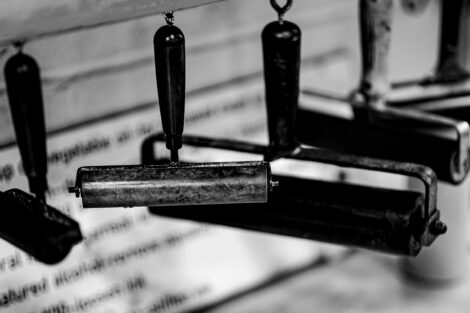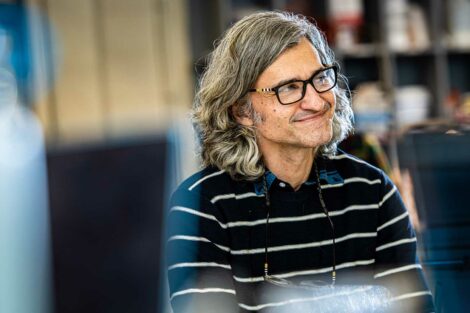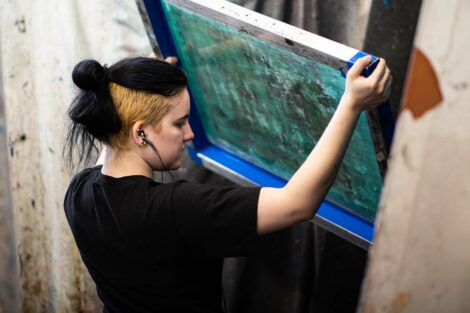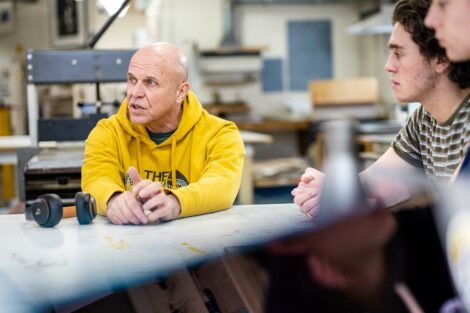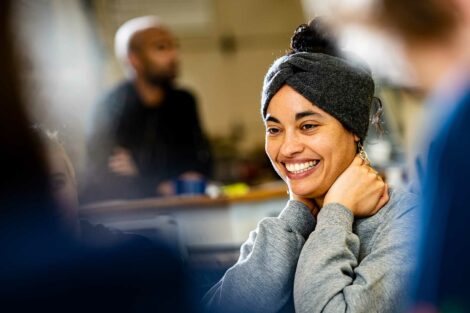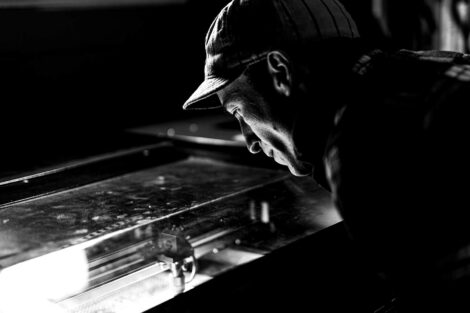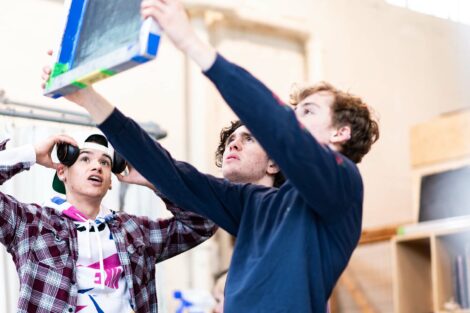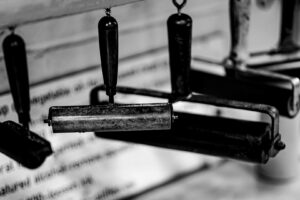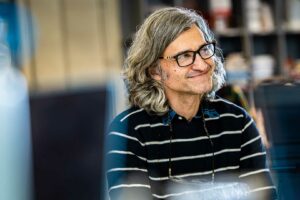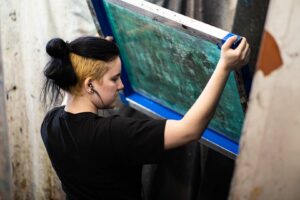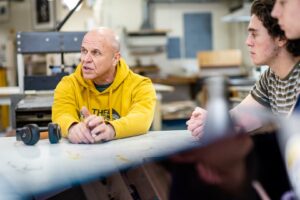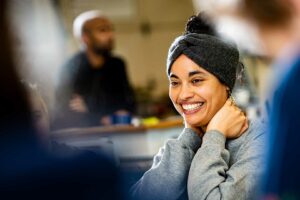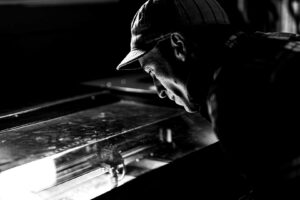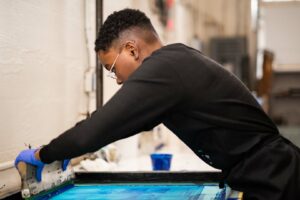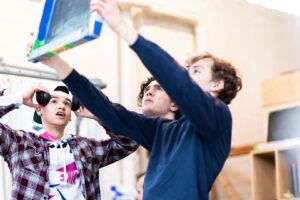Artists Glenn Goldberg and Chloe Bass work with EPI and students to print and build unique book
By Stephen Wilson
A name field in an electronic form. A statue of a crying nun. The tagline for IKEA. An ice cream cone illustration.
A seemingly random set of images and words. Hardly the case.
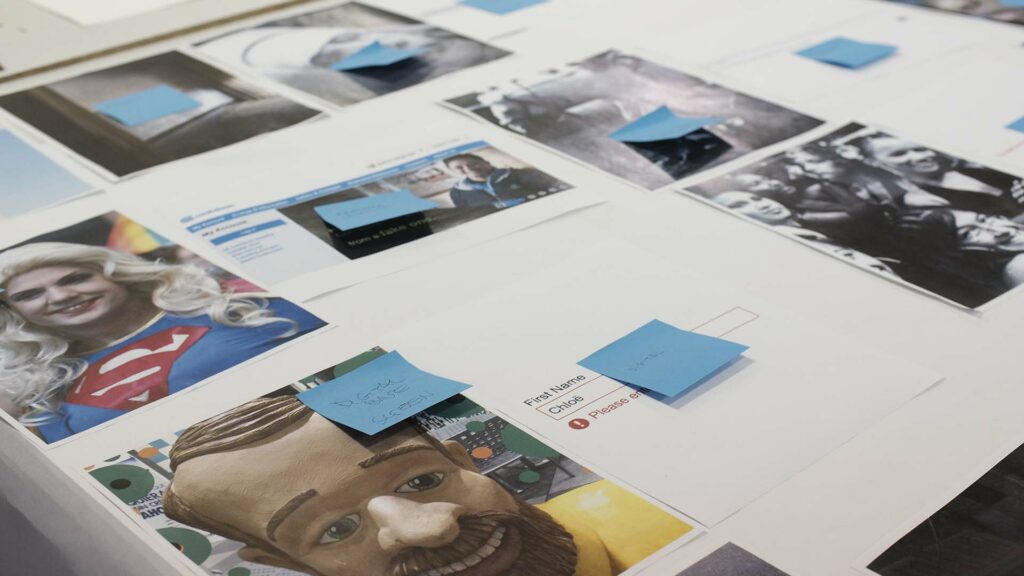 It is the field of small battles, the spaces where personal discoveries, social questions, and intense emotions play out. They call it a quiet war.
It is the field of small battles, the spaces where personal discoveries, social questions, and intense emotions play out. They call it a quiet war.
They are Glenn Goldberg and Chloe Bass, guest artists for a three-day residency at Experimental Printmaking Institute (EPI).
Pedro Barbeito, assistant professor of art and director of EPI, invited them to collaborate on a book project where artists, students, and Lafayette faculty would design, print, and bind a limited edition volume.
Over the course of the days, EPI was abuzz with discussions, decisions, deepening connections, and detailed work.
Goldberg and Bass began with a lecture, but not in the traditional sense of the term.
Speaking first, Goldberg shared new work based on a kit he picked up at a dollar store. Donning a foam nose, Coke-bottle spectacles, and a hoodie, he recorded a series of videos that combines a diaristic account of the day in a flat affect with affirmations, searching for the profound among the mundane, and some repeated phrases. The videos feel personal and steeped in melancholy.
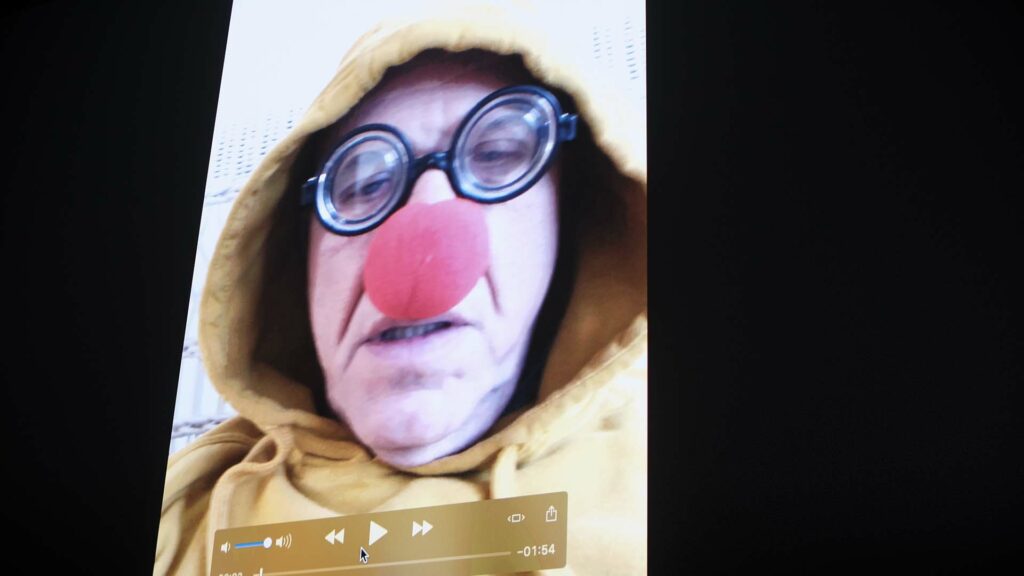 Then Bass spoke, adapting a performance art technique she has used to create “talk shows” where a person shares an image that begins a public conversation designed to invite vulnerabilities and intimacies to the fore. In this variation, students share an image, and Bass describes what she sees and what it evokes. Then the student who created the image steps forward to speak to it. Soon Bass reverses it and shares an image of her own where a student speaks first.
Then Bass spoke, adapting a performance art technique she has used to create “talk shows” where a person shares an image that begins a public conversation designed to invite vulnerabilities and intimacies to the fore. In this variation, students share an image, and Bass describes what she sees and what it evokes. Then the student who created the image steps forward to speak to it. Soon Bass reverses it and shares an image of her own where a student speaks first.
After their lectures, the audience asks questions. The first one is about masks—what we wear that hides what we feel, think, and experience, and how we can unveil those moments and connect in real ways.
That question is right on point, a crucial component in the quiet war of our lives.
The card game of the same name became the vehicle for pairing images for the book.
At EPI, Bass and Goldberg, sitting across from one another, each with 20 images, would play war, each revealing an image. Then together they would see how the pairings worked. Many were fabulous complements. Some pairings created new meanings. Others were at war.
Their goal was to match the spirit of each image.
All the image pairings were laid out on a table, notes on each for the work ahead in EPI. Students from Barbeito’s second-level printmaking class were on hand to help. In a Laros-funded project, student involvement is crucial. Students worked in pairs and partnered with faculty and staff.
Some were working on relief prints at the laser printer. Another team made transfer prints while a third was screen printing. Goldberg and Bass moved among teams to talk through decisions.
Ultimately the book will be assembled into a 25- to 50-print edition, including nearly 60 pages of paired images on various paper types and an embossed cover. The order is not linear. There is no narrative, only moments on pages that illustrate the tiny conflicts and confluences of living.
 It is the field of small battles, the spaces where personal discoveries, social questions, and intense emotions play out. They call it a quiet war.
It is the field of small battles, the spaces where personal discoveries, social questions, and intense emotions play out. They call it a quiet war. Then Bass spoke, adapting a performance art technique she has used to create “talk shows” where a person shares an image that begins a public conversation designed to invite vulnerabilities and intimacies to the fore. In this variation, students share an image, and Bass describes what she sees and what it evokes. Then the student who created the image steps forward to speak to it. Soon Bass reverses it and shares an image of her own where a student speaks first.
Then Bass spoke, adapting a performance art technique she has used to create “talk shows” where a person shares an image that begins a public conversation designed to invite vulnerabilities and intimacies to the fore. In this variation, students share an image, and Bass describes what she sees and what it evokes. Then the student who created the image steps forward to speak to it. Soon Bass reverses it and shares an image of her own where a student speaks first.